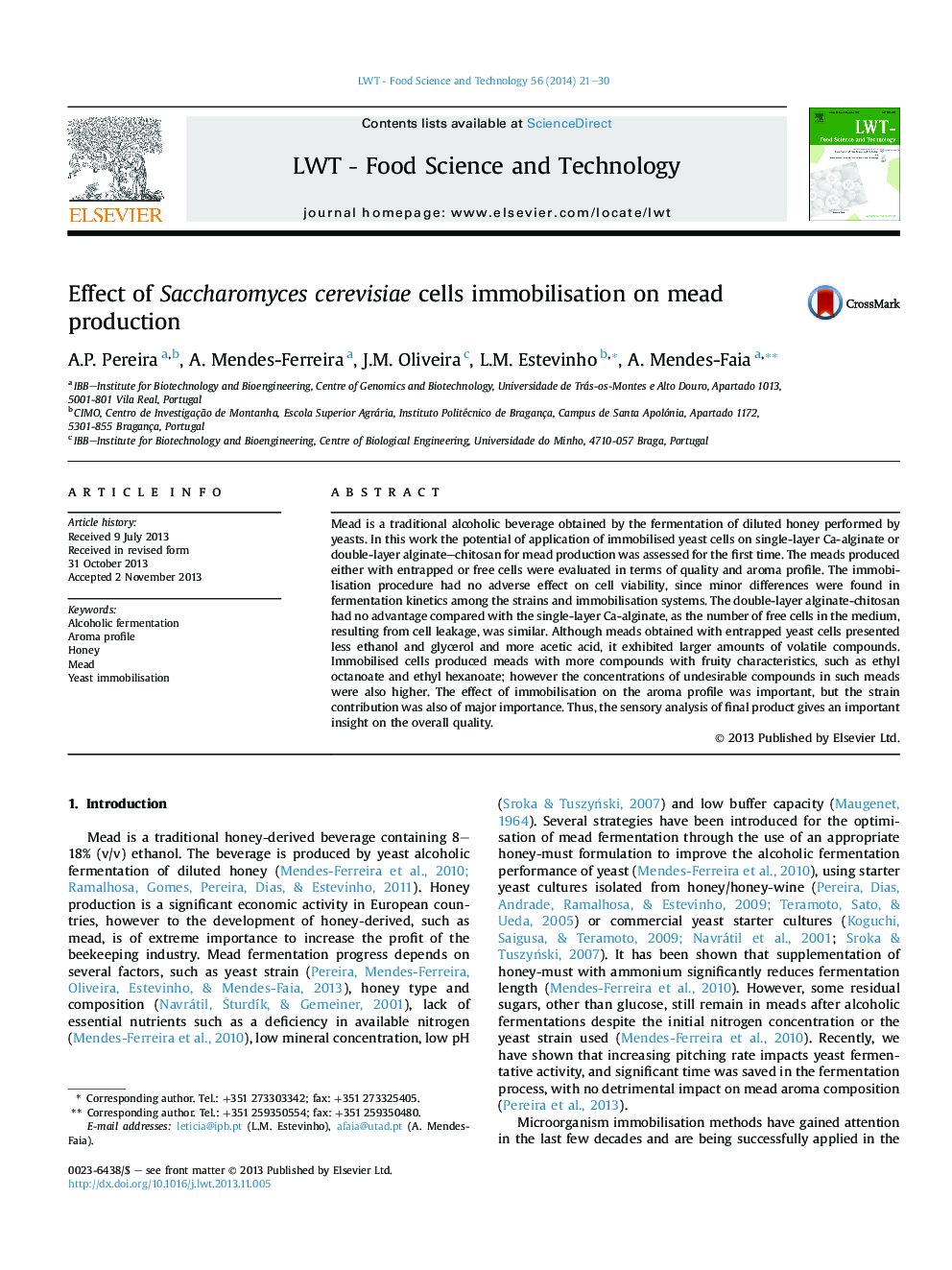| کد مقاله | کد نشریه | سال انتشار | مقاله انگلیسی | نسخه تمام متن |
|---|---|---|---|---|
| 4563874 | 1330895 | 2014 | 10 صفحه PDF | دانلود رایگان |

• Minor differences in fermentation kinetics among immobilised and free cells.
• Double-layer alginate–chitosan immobilization did not prevent cell leakage.
• Aroma profile was affected by cells condition and strain.
• Immobilisation has brought minor advantages for mead production.
Mead is a traditional alcoholic beverage obtained by the fermentation of diluted honey performed by yeasts. In this work the potential of application of immobilised yeast cells on single-layer Ca-alginate or double-layer alginate–chitosan for mead production was assessed for the first time. The meads produced either with entrapped or free cells were evaluated in terms of quality and aroma profile. The immobilisation procedure had no adverse effect on cell viability, since minor differences were found in fermentation kinetics among the strains and immobilisation systems. The double-layer alginate-chitosan had no advantage compared with the single-layer Ca-alginate, as the number of free cells in the medium, resulting from cell leakage, was similar. Although meads obtained with entrapped yeast cells presented less ethanol and glycerol and more acetic acid, it exhibited larger amounts of volatile compounds. Immobilised cells produced meads with more compounds with fruity characteristics, such as ethyl octanoate and ethyl hexanoate; however the concentrations of undesirable compounds in such meads were also higher. The effect of immobilisation on the aroma profile was important, but the strain contribution was also of major importance. Thus, the sensory analysis of final product gives an important insight on the overall quality.
Journal: LWT - Food Science and Technology - Volume 56, Issue 1, April 2014, Pages 21–30